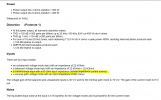I have a Sony TA-F555ES integrated amplifier made in 1983. It’s a true Current Drive. Sony called it “Audio Current Transfer”. So it seems that the big problem with Current Drive is finding the right speakers to match it to.
Not quite as noted above by
@EdW -- the description is about the signal link from internal preamp to amplifier stages.
"Inaugurated here was ACT (Audio Current Transfer) which uses current amplification to transfer signals from preamp to power amp stage and achieve 120dB of dynamic range and
outstanding levels of stereo separation."
You can do that with voltage, of course, and many have, but in fact current-mode signal routing is something I have done for many years in the high-speed analog world. It has its pros and cons, of course. Since much signal coupling occurs as voltage-mode signals via parasitic capacitance, an argument can be made for using current-mode signals so there is no (or very little) voltage swing on interconnects. That does have some advantages in certain applications and often offers greater noise immunity (again, in some but not all cases, depends upon the type of noise and coupling mechanism). Without voltage swing, crosstalk among channels can be reduced, assuming inductive coupling is well controlled/reduced (not too hard for audio; can get a bit more challenging at RF/mW frequencies). There are real-world problems no matter what you do.


